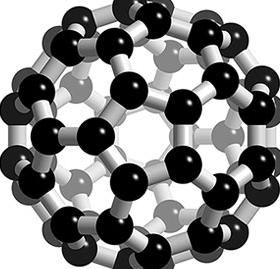
For many followers of graphene, graphene is a magical substance that can change the world. But at the same time, will it also cause pollution on the earth?
This is exactly what the researchers at the University of California are currently working on. What impact on the environment will be if graphene is released into the environment?
They found that graphene oxide nanoparticles can rapidly spread through surface water, which means that if this substance accidentally flows into a lake or a river, it can cause potential damage to animals, plants, and even humans.
Graphene "Dark" Face: Miraculous Material Becomes Serious Contaminant
“The current situation is similar to when we faced chemicals and drugs 30 years ago,†said Jacob D. Lanphere, a researcher from the Burns School of Engineering at the University of California, Waterfront, “It’s just that we don’t know when these The impact of nanomaterials on soil or water bodies will be affected, so this time we must look far ahead and use our data to explore ways to promote the sustainable application and development of this technology in the future."
Graphene oxide nanoparticles are made from graphene oxide. This graphene oxide is an ultra-thin material consisting of a single carbon atom. It has good flexibility, high mechanical strength and high electrical conductivity, which means it can be used in computers, solar panels, mobile phones and other technical fields.
However, in an article published in the journal Environmental Engineering Science, “Transport and Stability of Graphene Oxide Nanoparticles in Groundwater and Surface Water,†Lanphere found that graphene has become a serious problem. Environmental pollutants. When graphene is released into surface water, its hardness will increase and there will be less organic material adsorbed. It will quickly become unstable, and it will neither precipitate nor be carried along with the flow of water. go. But in surface water, it maintains good stability and can spread rapidly.
If graphene is a harmless substance, then all this will not be a problem. In addition, there was also a study last year that found that if humans accidentally ingested graphene, graphene cuts human cells and destroys their contents.
"These graphene materials may inadvertently be inhaled by the human body, or they may be injected or implanted into humans as part of new biomedical technologies," Robert Hurt, an engineering professor from Brown University, said: "So we want to Understand how they interact with cells in the human body.â€
Prior to this study, scientists believed that graphene was always presented in the most perfect square monolithic form. However, the Brown team found that sharp, small pieces of graphene are easily broken down. If these fragments of matter come into contact with human cells, they can cut human cells and be absorbed by them. It is not entirely clear what will happen next, just as scientists are not aware of the consequences of long-term exposure to graphene.
Although graphene has now achieved small-scale applications, there is still a long way to go to make it a daily material. Before we make it into everyday materials, it is important to consider what kind of harm it may cause. Of course, we cannot ignore the enormous benefits it brings. It needs to be further explored to achieve a wide range of applications.
Radiators, essential yes, but sometimes they`re pretty ugly. I can say this from personal experience, as a discoloured radiator sits in my hallway bringing down the decor. Faced with the option of replacing it at great cost, I`m now thinking a splash of paint might be the better option.
That theory is backed up by seeing this bold painted radiator transformation!
Painted Radiator,Finned Painted Radiator,Distribution Finned Painted Radiator,Painted Transformer Cooling Radiator
Shenyang Tiantong Electricity Co., Ltd. , https://www.ttradiator.com